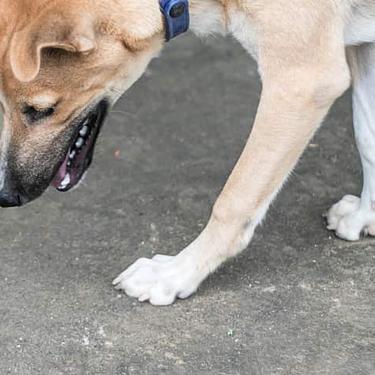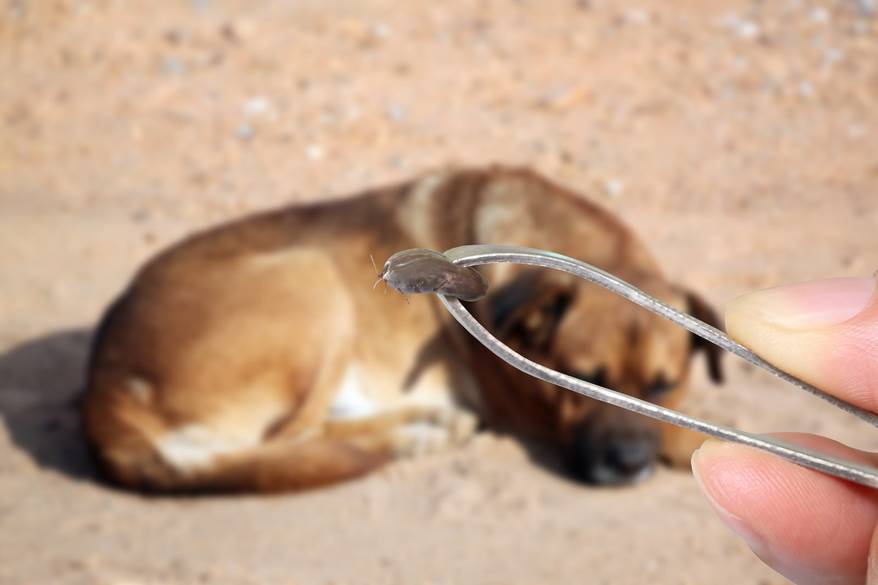
-
Find the right food for your petTake this quiz to see which food may be the best for your furry friend.Find the right food for your petTake this quiz to see which food may be the best for your furry friend.Featured products
 Adult 7+ Small & Mini Chicken & Brown Rice Recipe Dog Food
Adult 7+ Small & Mini Chicken & Brown Rice Recipe Dog FoodFor the unique nutritional needs of mature Small & Mini dogs
Shop Now Hill's Science Diet Adult Oral Care Chicken, Brown Rice & Barley Recipe Dog Food
Hill's Science Diet Adult Oral Care Chicken, Brown Rice & Barley Recipe Dog FoodClinically proven kibble technology to reduce plaque & tartar build-up
Shop Now Adult Small & Mini Lamb Meal & Brown Rice Recipe Dog Food
Adult Small & Mini Lamb Meal & Brown Rice Recipe Dog FoodFor the faster metabolism of Small & Mini dogs
Shop NowFeatured products Hill's Science Diet Adult Sensitive Stomach & Skin Dog Food
Hill's Science Diet Adult Sensitive Stomach & Skin Dog FoodHighly digestible recipe, gentle on stomachs. Nourishes skin & promotes a lustrous coat
Shop Now Adult Urinary Hairball Control Chicken & Rice Recipe Cat Food
Adult Urinary Hairball Control Chicken & Rice Recipe Cat FoodActively supports the health of the whole urinary system
Shop Now Adult Indoor Chicken Recipe Cat Food
Adult Indoor Chicken Recipe Cat FoodSupports energy level and beautiful fur in indoor cats
Shop Now -
Featured articles
 Easy DIY Dog & Cat Toys: Nine of Our Favorites
Easy DIY Dog & Cat Toys: Nine of Our FavoritesBrowse this comprehensive guide for several of our favorite DIY dog and cat toys that are sure to put a little pep in your pet's step.
Read More 15 Pet-Friendly Cities Ideal for a US Road Trip
15 Pet-Friendly Cities Ideal for a US Road TripCheck out our list of pet-friendly U.S. cities that are excellent travel options, offering off-leash dog parks and pet-friendly restaurants & hotels.
Read More My Pet Ate a Lizard — What Should I Do?
My Pet Ate a Lizard — What Should I Do?Learn what to do if your pet eats a lizard, including whether they can be toxic and symptoms to keep an eye on when they've swallowed one.
Read More -


You're probably aware that tick bites can be dangerous to humans. Did you know that ticks are just as dangerous to dogs? It's not easy to prevent ticks on dogs, but for the sake of your pup's health it's important to try. Here's everything you need to know about dogs and ticks and how to avoid an encounter with these pests.
Tick-borne Diseases Affecting Dogs
The American Kennel Club Canine Health Foundation (AKCCHF) lists no fewer than seven tick-borne or tick-related illnesses to which your pup may be susceptible to if he gets bitten. Here are the diseases, along with the signs to watch for:
- Lyme disease: Signs include stiff or swollen joints, lameness, fever, fatigue and loss of appetite. Several months may pass before an infected dog displays signs.
- Canine ehrlichiosis: The AKCCHF calls this one of the most dangerous tick-borne dog diseases. As with Lyme disease, signs might take months to appear. These include fever, runny eyes and nose, depression, appetite loss, weight loss, swelling in the limbs, bruising (petechiae) and nose bleeds.
- Canine anaplasmosis: Commonly referred to as either dog fever or dog tick fever, clinical signs to watch for include not only fever, appetite loss, joint stiffness and fatigue, but also vomiting and diarrhea and, in extreme cases, seizures.
- Rocky Mountain spotted fever: Typically, this illness runs its course in about two weeks, although in some cases it could be fatal. Signs include fever, neurological difficulties, such as stumbling or seizures, stiffness and skin lesions. PetMD adds to watch for heart abnormalities and signs of pneumonia, liver damage or kidney failure.
- Canine babesiosis: This infection causes anemia, which typically presents with pale gums and weakness. Vomiting might occur.
- Canine bartonellosis: This illness causes fever and intermittent lameness, and can also lead to heart or liver disease if left untreated.
- Canine hepatozoonosis: Unlike other tick-borne dog diseases, this one doesn't result from the tick biting the dog, but rather from the dog biting the tick. A dog that ingests a tick carrying this infection will develop fever, muscle pain, runny eyes and nose, bloody stool or diarrhea.
Tick Species that Threaten Dogs

These are the most common species of ticks in the U.S. that pose a health threat to dogs, according to PetMD:
- Deer tick: Sometimes referred to as the blacklegged tick, this species carries Lyme disease, canine ehrlichiosis and canine babesiosis. Deer ticks are typically found in wooded areas of the northeastern and upper Midwestern United States. The Centers for Disease Control warns that spring, summer and fall are the riskiest seasons for being bitten by a deer tick.
- American dog tick: Also known as wood ticks, American dog ticks carry Rocky Mountain spotted fever. They inhabit areas near water and humid locales throughout the U.S. east of the Rocky Mountains, and in some places along the Pacific coast. Spring and summer carry the greatest risk of getting bitten.
- Lone star tick: This species gets its name from the distinctive white dot on its back. A carrier of Rocky Mountain spotted fever and ehrlichiosis, these ticks are typically found in wooded areas along rivers and creeks. They're distributed throughout the eastern and southeastern U.S. including eastern parts of Texas, Oklahoma, Kansas and Nebraska. Because this species bites and feeds at every life stage, it poses a danger year-round whenever temperatures are above freezing.
- Brown dog tick: Sometimes referred to as a kennel tick or house tick, the brown dog tick tends to prefer dogs over other animals. This type is notable for its tendency to move indoors and infest homes and dog kennels, which makes it dangerous year-round. A transmitter of Rocky Mountain spotted fever, the brown dog tick is found all over the world. In the U.S., the pest tends to be most concentrated in the southwest and along the Mexican border. While concentrated mostly in the U.S., the brown dog tick can be found worldwide.
There are also numerous species that exist around the world if you find yourself in one of these areas of the globe:
- Ornate dog tick: This is the most common species of tick across Europe that spreads from western Europe to pockets across eastern Europe.
- Australia paralysis tick: This tick found in Australia, can cause paralysis by injecting neurotoxins into its hosts.
- Chicken tick: Found primarily in South America, posing a threat more to poultry, chicken ticks can be found on dogs that can make your pup sick.


Tasty Tips
Prevent Ticks on Dogs

While it might not be possible to keep dogs and ticks from encountering each other, you can take steps to reduce your dog's exposure to ticks. The AKCCHF recommends using a tick preventive on your pet, such as a vaccination, topical treatment, special shampoo or a tick collar. Over-the-counter and prescription products are available, so talk to your veterinarian about your options.
None of these products are completely effective, however, it's important to be vigilant about checking your pup regularly for ticks and tick bites, especially during tick season. This is especially true for field dogs and other dogs that spend a lot of time outdoors or in potentially tick-infested areas. Develop a habit of conducting a daily tick inspection by running your fingers through your dog's fur and over his skin to check for small bumps. Running a brush or flea comb through your dog's fur can also help catch any ticks that haven't yet attached. If you find a tick, it should be removed and disposed of immediately. While ticks can live everywhere including your backyard, they are particularly prevalent in wooded areas and fields, so if you live near a forest, field, or take your dog camping, make sure to do a thorough check each night after he comes inside.
Because signs can be hard to pin down to a specific illness, and because sometimes outward signs take a long time to appear or never appear at all, it's also a good idea to make testing for tick-borne illnesses a regular part of your dog's annual wellness exams.
Removing Ticks and Treating Tick Bites
If you find a tick and you're inexperienced with tick removal, immediately bring your dog to a vet. If the tick isn't removed correctly, its head might break off and remain embedded under your dog's skin, which could lead to infection. Your vet or a veterinary technician is a dog and tick expert. He or she can demonstrate how to properly remove a tick from your dog so that you can perform the procedure on your own going forward.
Ticks should be removed as quickly as possible though, which might mean you'll need to do it yourself regardless of experience. When removing a tick, protect yourself from infection by wearing disposable gloves as you work. Use tweezers to grip the tick as close to the skin as possible, and slowly pull it straight out, being careful not to squeeze the body. Although you might have heard tick removal advice along the lines of twisting the tick, smothering it with alcohol or another product, or burning it with a match, these methods could do more harm than good.
Once the tick is free, place it in a small container of rubbing alcohol. The alcohol will kill it and make it safe to properly dispose of. Place the dead tick in a sealed bag before putting it in the trash or flush it down the toilet. Under no circumstances should you squash the tick. It could expose you to infection. Afterward, clean the bite area with disinfectant. At the end of the entire ordeal, be sure to wash your hands thoroughly with soap and water. Make sure to monitor your dog for any side effects after the removal to be sure that the tick didn't infect him.
As you can see, dogs and ticks are a potentially disastrous combination. By taking a little extra care to protect your pup, you can do a lot to reduce the risks associated with ticks.


Jean Marie Bauhaus is a pet parent, pet blogger, and novelist from Tulsa, Oklahoma, where she usually writes under the supervision of a lapful of fur babies.
Related products

Clinically proven kibble technology to reduce plaque & tartar build-up

Improves everyday ability to get up & go

For the faster metabolism of Small & Mini dogs

For the unique nutritional needs of mature Small & Mini dogs
Related articles

Understand the role that Omega-6 and Omega-3 fatty acids play in your dog's overall health, and how you can ensure they are getting enough.

Your dog's coat and skin are a big part of your dog's overall health. Ensure you keep your dog's coat healthy, by following these simple tips.

Discover how the field of dog science is giving us more and more insights into the inner workings of our furry best friends.

Learn basic steps & precautions for treating a cut on your dog, including what you can put on the cut, and when you should take them to the vet.

Put your dog on a diet without them knowing
Our low calorie formula helps you control your dog's weight. It's packed with high-quality protein for building lean muscles, and made with purposeful ingredients for a flavorful, nutritious meal. Clinically proven antioxidants, Vitamin C+E, help promote a healthy immune system.
Put your dog on a diet without them knowing
Our low calorie formula helps you control your dog's weight. It's packed with high-quality protein for building lean muscles, and made with purposeful ingredients for a flavorful, nutritious meal. Clinically proven antioxidants, Vitamin C+E, help promote a healthy immune system.

